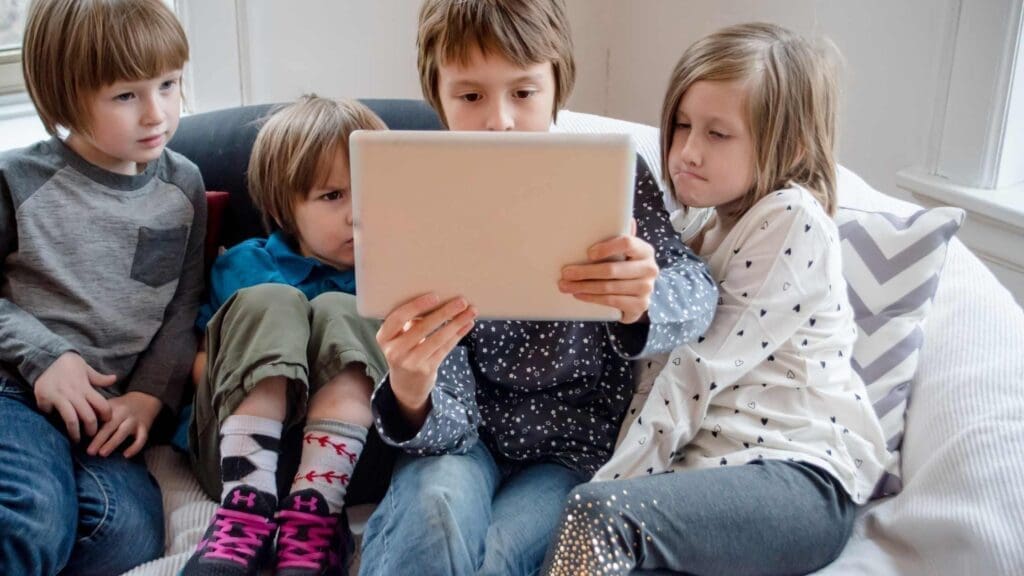Teaching Kids to Share: 7 Effective Strategies Every Parent Should Know
Teaching kids to share can be challenging, especially when they’re young and still learning about empathy and cooperation.
I’ll never forget the day when I watched my two kids, Liam and Ella, tugging on the same toy truck, each screaming as if the world was about to end.
They were only three and four at the time, but in that moment, I felt helpless. Sharing wasn’t something that came naturally to either of them, and I wondered how on earth I was going to teach them this vital life skill.
But after some trial and error, I discovered that sharing can be taught—gently and with a few strategic approaches that I’m about to share with you.
One of the biggest misconceptions about parenting is that teaching kids to share means forcing them to give up their favorite toys on command.
If you’re struggling with this too, take a deep breath and read on. It’s not about forcing it but guiding them toward understanding the value of sharing.
Heads up: This post may include affiliate links. As an Amazon Associate, I earn from qualifying purchases—at no extra cost to you. Full privacy policy and disclosure here.
Effective Strategies for Teaching Kids to Share
1. Model Sharing Behavior
Children are like little sponges. They absorb everything they see us do, good or bad. So, the best way to teach them to share is to model that behavior yourself.
Whether you’re offering your partner a bite of your snack or sharing your favorite book with a friend, make sure your child is watching.
You could even take it a step further by sharing something special with your child—like a piece of chocolate from a hidden stash or letting them use your favorite kitchen gadget while baking together.
If you’ve ever felt frustrated trying to teach your toddler about fairness, you’re not alone — teaching kids to share is often more about modeling than lecturing.
2. Use Timers to Take Turns
Experts agree that teaching kids to share works best when it’s done through play, not pressure.
Kids are impatient creatures by nature. Sometimes, sharing can be tough because they don’t want to wait.
This is where timers become your best friend. Introduce a timer to show that each child gets a fair amount of time with a toy. For example, give one child five minutes with their favorite remote control car before it’s the sibling’s turn.
You can grab a cute kid-friendly timer that keeps the process fun and fair for everyone involved.
3. Offer Positive Reinforcement
When it comes to teaching kids to share, having realistic expectations for different ages is key.
When your child does share, even if it’s just for a moment, celebrate it! Positive reinforcement works wonders for encouraging good behavior.
You could create a sharing chart with stickers, and once they’ve shared a certain number of times, reward them with a special activity or a new board game the whole family can enjoy.
4. Create Opportunities for Group Play
Some kids learn better by watching their peers. Encourage group playdates where sharing is more likely to happen naturally.
You can introduce games that require cooperation, such as building block sets or team-based puzzles, to help children experience the joy of working together and sharing resources.
You can use storybooks and pretend play as tools for teaching kids to share without conflict.
5. Teach the Concept of “Special” and “Community” Toys
One strategy that worked wonders in our house was the idea of “special” versus “community” toys.
I told my kids they could have a few “special” toys that were just for them, and everything else was “community” property to be shared with others. To make it fun, we’d even label the bins with colorful markers.
The key here is to give your child control over some toys while introducing the concept of shared spaces for others, like a toy storage organizer where all the “community” toys live.
Many parents find that teaching kids to share starts with setting boundaries on ‘special toys’ versus community ones.
Understanding toddler behavior is crucial; learn more in our article on toddler behavior management.
6. Tell Stories About Sharing
Kids love stories. Sometimes, reading about a favorite character who learns the value of sharing can resonate more than a lecture from mom or dad.
Books like “Llama Llama Time to Share” and other children’s books that focus on cooperation can provide a fun way to introduce the concept of sharing without feeling like you’re giving a lesson.
Timers, praise, and consistent routines are some of the best strategies for teaching kids to share naturally.
7. Role-Playing Scenarios
Turn sharing into a game by role-playing. Use their favorite stuffed animals or action figures to create little scenarios where sharing is needed.
You can narrate something like, “Oh no, Teddy doesn’t want to share the blocks with Bunny. What can we do to help Teddy share?”
Kids are more likely to engage with this kind of playful learning. A cute plush set can add an extra level of fun to these activities.
For more insights on positive parenting techniques, check out our guide on positive parenting strategies.

❓ FAQ
At what age should I start teaching my child to share?
Children typically begin to grasp the concept of sharing around ages 3 to 4. Before this, it’s beneficial to model sharing behavior and encourage turn-taking during play.
How can I encourage my child to share without forcing them?
Use tools like timers to manage turn-taking and provide positive reinforcement when your child shares voluntarily. For example, a visual timer can help children understand time limits.
Are there any books that can help teach sharing?
Yes, books like “Llama Llama Time to Share” are excellent resources that illustrate the importance of sharing through engaging stories.
What toys are best for promoting sharing among children?
Toys that encourage cooperative play are ideal. Consider building block sets or team-based puzzles that require children to work together.
How can I set boundaries with “special” and “community” toys?
Designate certain toys as “special” for individual use and others as “community” toys for shared play. A toy storage organizer can help keep these categories organized and clear.
💌 Grab Your Free Sharing Strategies PDF!
Want a simple cheat sheet to guide your little one through sharing — without power struggles?
Download this FREE printable guide: “7 Steps for Teaching Kids to Share (Without Forcing It)”
It includes actionable tips, book suggestions, and even a fun Sharing Agreement your kids can sign!
👉
Bottom Line
I won’t lie—teaching kids to share can be a slow process. Some days, it will feel like you’ve made no progress at all.
But over time, as you reinforce these strategies, you’ll see the moments where they share not just their toys but also their joy and laughter with others.
After all, sharing isn’t just about objects; it’s about connecting with others. And that’s a lesson worth teaching.

